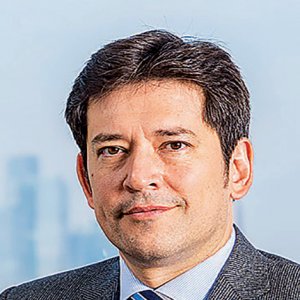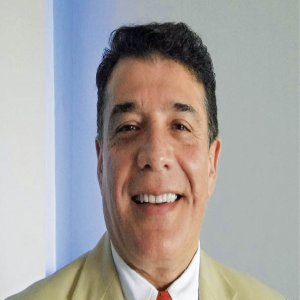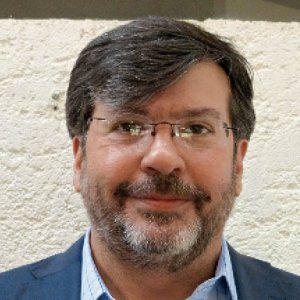New Spanish Appetite for Industrial Projects

Q: How does Mexico compare with other Latin American markets?
JA: Mexico has a stable political backdrop and has experienced considerable economic growth. Additionally, the energy demand is both significant and challenging. No other country in Latin America is growing like Mexico, and considering its population and the growth in the demand for energy, the possibilities are endless. Mexico has access to cheap gas that allows developing technologies such as cogeneration at attractive costs. Other smaller countries, like those in Central America, present a situation where natural gas infrastructure is lacking, making it more difficult to establish cogeneration plants. It is true that cogeneration can use other fuels, such as fuel oil or coal, but it is still easier, cleaner, and more feasible to use gas. For example, Peru has gas resources, but in this country cogeneration would compete against the more developed hydro. In Mexico, gas can be used for cogeneration and combined cycle at competitive costs.
Q: What can Grupo Ortiz bring to the Mexican market that will allow it to succeed?
JA: Grupo Ortiz is successfully operating in Mexico thanks to the support of Gastélum Abogados. The first element we can provide customers is a broad experience. The interest of Grupo Ortiz in this country should also be taken into account, as well as our dedication and effort to generating the most effective technical solutions. Our tailor-made solutions in previous projects have entailed the evaluation of several options and optimization of services according to the user’s strategy, Mexico’s estimated growth, and energy costs.
The Group does not have any particular commitments with equipment manufacturers, enabling it to use the most suitable machinery according to a project’s requirements. Conversely, other companies use equipment that is not always the most adequate because they want to position a product as part of a deal with an allied manufacturer. We adapt to our clients’ needs, proposing flexible solutions and even providing financial support or financial advice. In order to do this, we offer clients pre-assessments to determine whether cogeneration is their best option. Grupo Ortiz is open to the possibility of acting as an investor, so we are an energy-related service company that invests and subsequently sells electricity and heat to industrial clients. Rather than focusing on selling a project, we concentrate on providing integrated solutions.
Q: Given the conditions in Mexico, what will be the company’s specialization?
JA: Personally, I prefer working in the private market because it enables me to offer clients different alternatives. There is a dialogue, a negotiation, and an adjustment regarding the proposed solutions when dealing with private customers, which is not usually the case when working with the public sector. This is because projects in the public sector are entirely defined, leaving no room to propose areas of improvement. With these clients, it is necessary to follow requests, even if there is a potentially better option available. Grupo Ortiz seeks to offer excellence in all of its projects, and many public projects are designed in a way in which this approach is not possible. Our solutions are of the highest quality, which is not always valued in a public project because the options we suggest might not be regarded as competitive. However, we provide advice to the public sector even before a tender is launched, so whenever possible, we try to help the authorities determine certain technical specifications.
JC: An advantage of Grupo Ortiz is its flexibility, as we can implement a small cogeneration plant for a hospital or a large one for a ceramics manufacturer. Conversely, our competitors do not focus on smaller projects and if they do, the client is not given the proper attention. We are closer to our clients, regardless of their size, and provide flexible solutions. There is a lack of companies that are interested in or willing to invest in their clients’ projects, which marks another important differentiator. Some financial institutions are willing to provide 100% of the financing because of the Group’s experience and reputation. In these cases, Grupo Ortiz has to be involved throughout the whole project, including the operational stages. Another specialty of the Group consists of turnkey projects for PV and wind energy developments, and we also see opportunities in CFE’s public works in transmission and distribution through our affiliated companies.
Q: How would you describe the ideal cogeneration project for Grupo Ortiz?
JA: That would be a project for a specific industry with a considerably high demand for electricity and thermal energy. The electricity demand would have to be large enough so that the design would not require exporting, meaning it could handle a demand for self-consumption of approximately 8,600 hours per year. The more hours, the better, as continuous use increases the plant’s performance and stability. Another important element would be to have access to natural gas in order to avoid additional gas- related infrastructure costs. In cases where electricity has to be exported, there should be a clear guideline to facilitate this process. These would be the main criteria, and then we would be open to discussing several financing options.
Grupo Ortiz should seek projects in several sectors, including the chemical sector, the paper industry, ceramic flooring, the food industry, vehicle manufacturing, and other industries that work continuously and have high demands for thermal energy. There is another market for smaller projects in shopping centers, hospitals, and hotels. In these, the cogeneration capacity needed is usually between 1-5MW, but the technical effort is not to be overlooked, as these projects tend to take place in facilities that demand both heat and cooling. In these cases, I would implement an additional technology consisting of absorption equipment. Unlike larger industrial projects, the plant has to be turned on and off every day, and there are also seasons when there is no demand for heat, complicating the programing of the project. I generally tend to seek the largest global output and efficiency levels in a plant, reaching performance levels of at least 85% and equivalent electricity outputs of 75-78%, which puts us 20 points ahead of most combined cycle plants.
Q: In addition to cogeneration, what experience does the Group have in energy efficiency?
JC: I believe our experience in Spain will be replicated in Mexico. In Spain there were plenty of industrial facilities, such as smelting furnaces, that ran on electricity at high costs, or by using fuel oil and coal. As a result, the product that ultimately entered the furnace did not undergo the same environmental conditions as at the combustion stage, thus there was a thermal exchange that reduced the output. Natural gas, due to its excellent combustion and the fact that it does not produce particles when burning, provides a stable environment for the products to be heated. Moreover, ceramics can be heated directly with natural gas. The implementation of natural gas generated massive energy savings in the Spanish industry, and companies only had to adapt their facilities to natural gas-powered equipment. Mexico plans to develop approximately 16,000km of natural gas pipelines in a relatively short time, so many industrial regions will improve their performance. There are many natural gas technologies that can be used, and industries that utilize large engines can install speed variation devices in order to increase savings.
Grupo Ortiz is interested in cogeneration projects in Mexico, and we are putting a lot of effort in implementing other clean technologies. Another example of energy efficiency would be LED technology, which allows savings of more than 60%. There is a wide range of energy-saving options, but these require evaluation on a case by case basis to establish the best choice for a given industry in order to make a recommendation. We are looking at the possibility of working on a large photovoltaic park (150MW) in Aguascalientes that will feed electricity to the grid. Given the magnitude of this development, it would be a flagship project for the Group. We will begin with two 30MW modules and then expand to 150MW. We are excited about entering the Mexican market, especially because Grupo Ortiz has other connected business lines such as energy infrastructure for electricity transmission and distribution, and natural gas pipelines and substations.



















